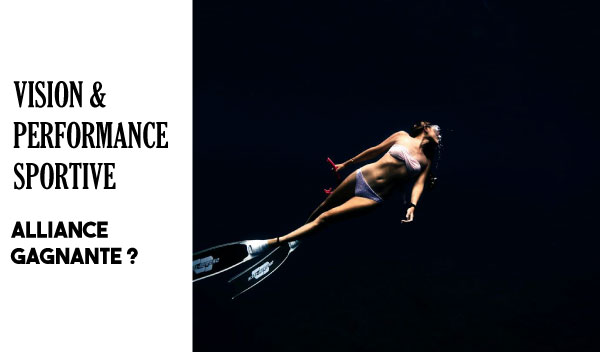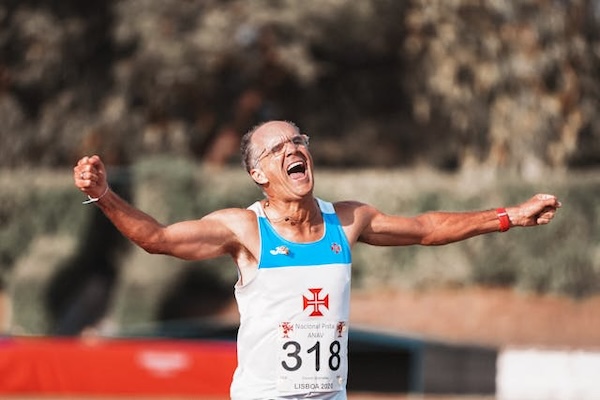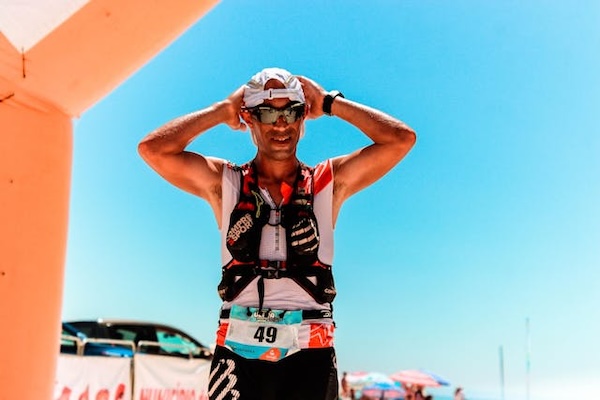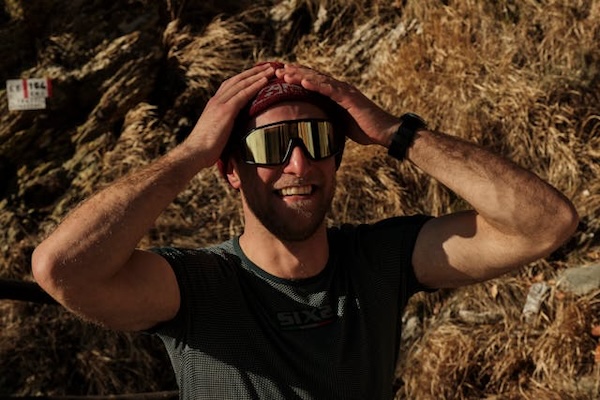FILE Vision and Sports Performance: Winning Alliance?

Vision plays a crucial role in sports performance. Indeed, visual acuity and perception of movement are determining elements for many athletes. As partnerships between manufacturers and high-level athletes flourish, how do visual abilities influence sporting performance? How can modern technologies and specialized equipment optimize this performance? What are the visual risks associated with certain disciplines and the solutions available to minimize them?
The essence of a coalition between vision and sports performance
Visual and sporting performances are intrinsically linked. A study conducted during the 1992 Winter Olympics in Albertville showed that 34% of athletes wore glasses and 19% used contact lenses. This highlights the importance of optimal vision for elite athletes. During competitions, athletes must process a multitude of visual information coming from various directions, often in difficult weather conditions or with low lighting. Static and dynamic vision, central and peripheral, is essential to capture this information and react quickly.

Athletes must constantly adapt their vision to changing situations . For example, a soccer player must be able to track the ball while monitoring the movements of teammates and opponents. This ability to quickly capture and analyze visual information is crucial for making effective decisions in a short period of time. This is why the visual sensory examination of athletes must be comprehensive, in order to determine curable deficits and identify potential inabilities that could harm their performance.
Technological advances and modern methods
Thanks to advances in neurophysiology, we better understand visual sensory mechanisms . In addition to classic tests such as measuring visual acuity and color vision, modern tools make it possible to analyze sensitivity to luminance contrasts, essential for shape perception. The Equitest, for example, tests the athlete's central balance by assessing visual, vestibular and proprioceptive sensory factors. This technique is used to evaluate the neurosensory organization of a patient, that is to say, to determine how he uses the three components of the balance function (visual, vestibular and somesthetic) to maintain his balance.

Technologies such as eye trackers, capable of measuring eye movements in real time, and sensor-rich binocular systems, which analyze eye and head movements, are valuable tools for optimizing sports vision . These devices not only make it possible to develop rehabilitation strategies for young visually impaired people but also to improve the performance of athletes.
Dynamic visual acuity, which refers to the ability to perceive the details of a moving object, and the attentional visual field, which allows elements to be identified in a moving environment, are two crucial modes of perception in many sporting disciplines, such as ball sports and combat sports. Developing these abilities can provide a significant competitive advantage to athletes.
Optical equipment: improving sports performance
Adapted optical equipment is crucial to improving sports performance. Sports glasses should be light, durable and provide good grip to prevent slipping. Contact lenses, especially those with UV or photochromic filters, provide freedom of movement and peripheral vision, ideal for many sports. On the other hand, refractive surgery , although popular, presents risks and is not always recommended for sports involving violent contact.
Sports glasses should also be designed to meet the specific requirements of each discipline. For example, swimmers need glasses that protect their eyes from irritation caused by chlorinated water in swimming pools or salt water in the sea. Photochromic lenses, which adapt to the intensity of UV rays, are particularly useful for outdoor sports. In the mountains, where the light is often intense, grade 4 lenses, which filter 100% of UV and 92% of visible radiation, are recommended.

For fast-paced sports like cycling, goggles should provide protection from wind and debris while being compatible with helmets. Contact lenses, on the other hand, are often preferred for contact sports or sports requiring unobstructed peripheral vision. However, lenses are not recommended for water sports due to the risk of eye infection.
Risks to vision in sport
Playing sports can also present risks to the eyes . Racquet sports, for example, expose the eyes to fast, powerful projectiles. Other sports, such as cycling, pose risks of flying gravel or dust. Protective equipment , such as anti-fog swimming goggles, masks for combat sports, or sunglasses with polarized lenses for outdoor sports, are essential to protect the eyes of athletes.
Levels of eye risks vary between sports. Activities classified as high risk include sports with small, fast-moving projectiles, such as paintball, or those involving frequent body contact, such as boxing and martial arts. For these sports, sturdy and specially designed protective equipment is essential to prevent eye injuries.

On the other hand, moderate risk sports, such as tennis or football, require less specific but still protective equipment. Glasses with impact-resistant lenses are often sufficient for these disciplines. For low-risk sports, such as running or swimming, the emphasis is on comfort and adaptation to the environment (e.g. anti-glare lenses for outdoor swimmers).
[ =]
Vision is a key factor in sports performance . Technological advances and modern optical equipment provide athletes with the tools needed to optimize their vision and improve their performance. Optical professionals play a crucial role in helping athletes choose and adapt this equipment. By understanding the specific needs of each discipline, opticians can help athletes reach new heights.
In short, the synergy between vision and sports performance highlights the importance of collaboration between opticians and athletes to maximize results on the field. Thanks to advances in technology and specialized equipment, athletes can now overcome visual obstacles and excel in their respective disciplines. For optical professionals, it is essential to stay informed of the latest innovations and understand the specific requirements of each sport in order to provide the best advice and solutions to their athlete clients.


